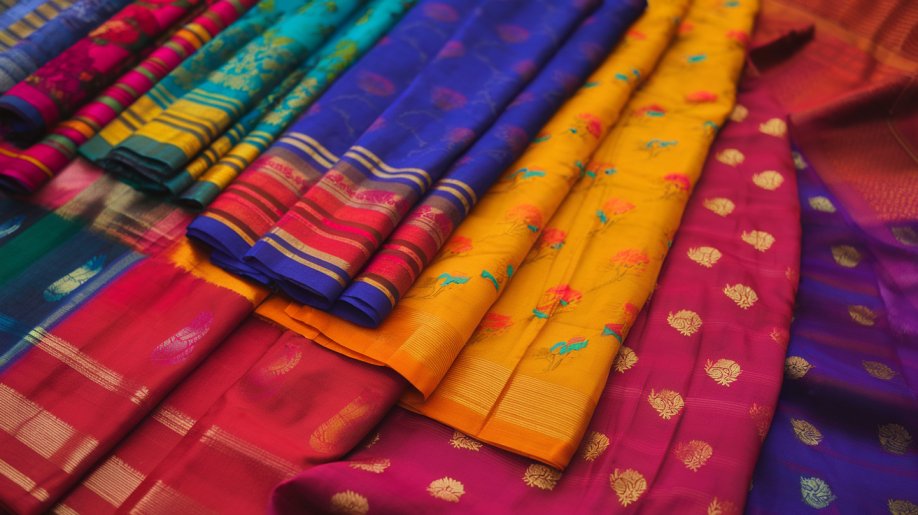The Mesmerizing Hues of Habaspuri Sarees
Sarees are not just garments; they are woven narratives, each drape telling a story of culture, tradition, and artistry. Among the vast tapestry of Indian sarees, Habaspuri sarees stand out for their unique designs and vibrant hues. Originating from Odisha’s beautiful region, these sarees celebrate color, skill, and craftsmanship. In this blog, we will delve into the mesmerizing color palettes of Habaspuri sarees, exploring the significance behind each shade and how they come together to create stunning pieces of art.
The Essence of Color Palettes of Habaspuri Sarees
Colors play a vital role in saree weaving, especially in Habaspuri sarees. Each color represents a particular emotion, season, or festival deeply rooted in Odisha’s traditions. The artisans carefully select colors to create stunning contrasts and harmonies, transforming simple threads into breathtaking art pieces.
- Vibrant Reds and Pinks
Red is often associated with love, passion, and auspiciousness in Indian culture. Shades of red and pink are prevalent in Habaspuri sarees, symbolizing celebration and joy. These colors frequently enhance bridal sarees and festivals, embodying the spirit of festivity and the beauty of womanhood. A deep crimson Habaspuri saree can evoke warmth and vitality, making it a popular choice for special occasions.
- Rich Blues and Greens
Blues and greens represent tranquility and nature. These colors often draw inspiration from the lush landscapes of Odisha, where rivers and fields flourish. A Habaspuri saree in a deep blue or emerald green can evoke a sense of calmness and serenity. Such colors signify prosperity and harmony, making them ideal for religious ceremonies and celebrations. Using these hues with elaborate patterns produces an eye-catching visual impression.
- Sunny Yellows and Oranges
Bright yellows and oranges symbolize happiness, warmth, and energy. In the context of Habaspuri sarees, these hues are reminiscent of the sun, representing vitality and optimism. A saree adorned with golden-yellow patterns can bring a lively aura to any gathering. People often wear these colors during harvest festivals, reflecting the joy of abundance and celebrating nature’s bounty.
- Elegant Neutrals
While vibrant colors dominate Habaspuri sarees, neutral tones like beige, cream, and taupe are also significant. These shades often serve as a backdrop for more vibrant colors, allowing intricate designs and patterns to stand out. Neutrals embody elegance and sophistication, making them suitable for formal occasions and everyday wear. A simple beige Habaspuri saree with vibrant motifs can create a timeless look, combining tradition with modernity.
The Art of Combination
One of the most captivating aspects of Habaspuri sarees is the way these colors come together. The weavers skillfully blend hues to create beautiful, intricate patterns that tell a story. The juxtaposition of colors enhances the saree, transforming it into a masterpiece that people can cherish for years.
Cultural Significance of Colors
Colors in Habaspuri sarees carry cultural significance. For instance, people wear different colors during various festivals and rituals. Red and gold are popular during weddings, symbolizing prosperity and fertility, while white is often worn during mourning, representing purity and peace. Understanding these associations can enhance the appreciation of the artistry of creating Habaspuri sarees.
The Colorful Legacy of Habaspuri Sarees
Habaspuri sarees are more than just clothing; they reflect the rich cultural heritage of India, woven with love and artistry. The vibrant hues in these sarees tell tales of tradition, celebration, and the beauty of nature. Whether you are draping a stunning red Habaspuri for a wedding or a sunny yellow for a festive gathering, each color carries significance and charm.
As you explore the world of Habaspuri sarees, remember that the colors are not just visually appealing; they express Odisha’s identity, culture, and vibrant spirit. Embrace these hues, and let your saree drape tell your unique story.


